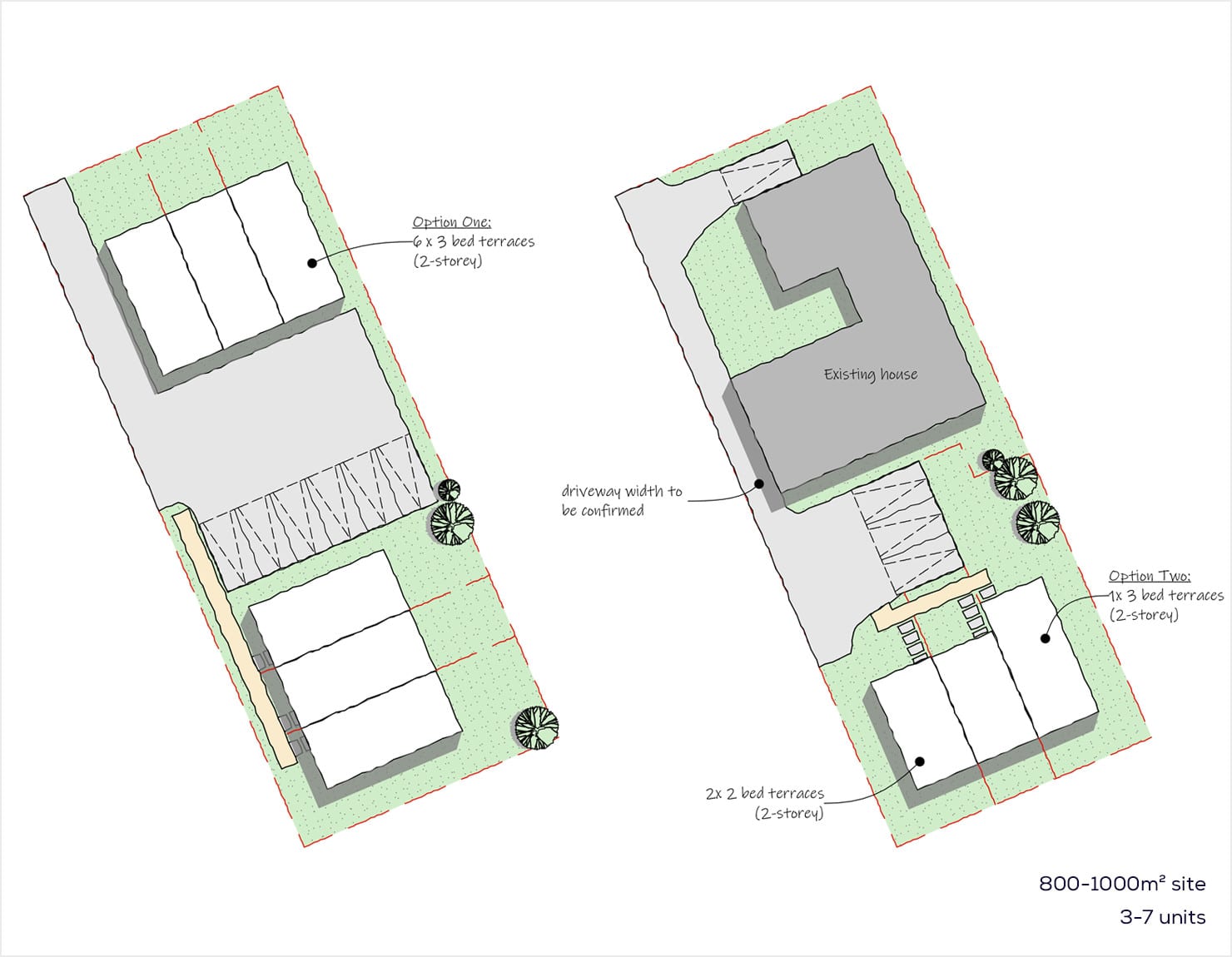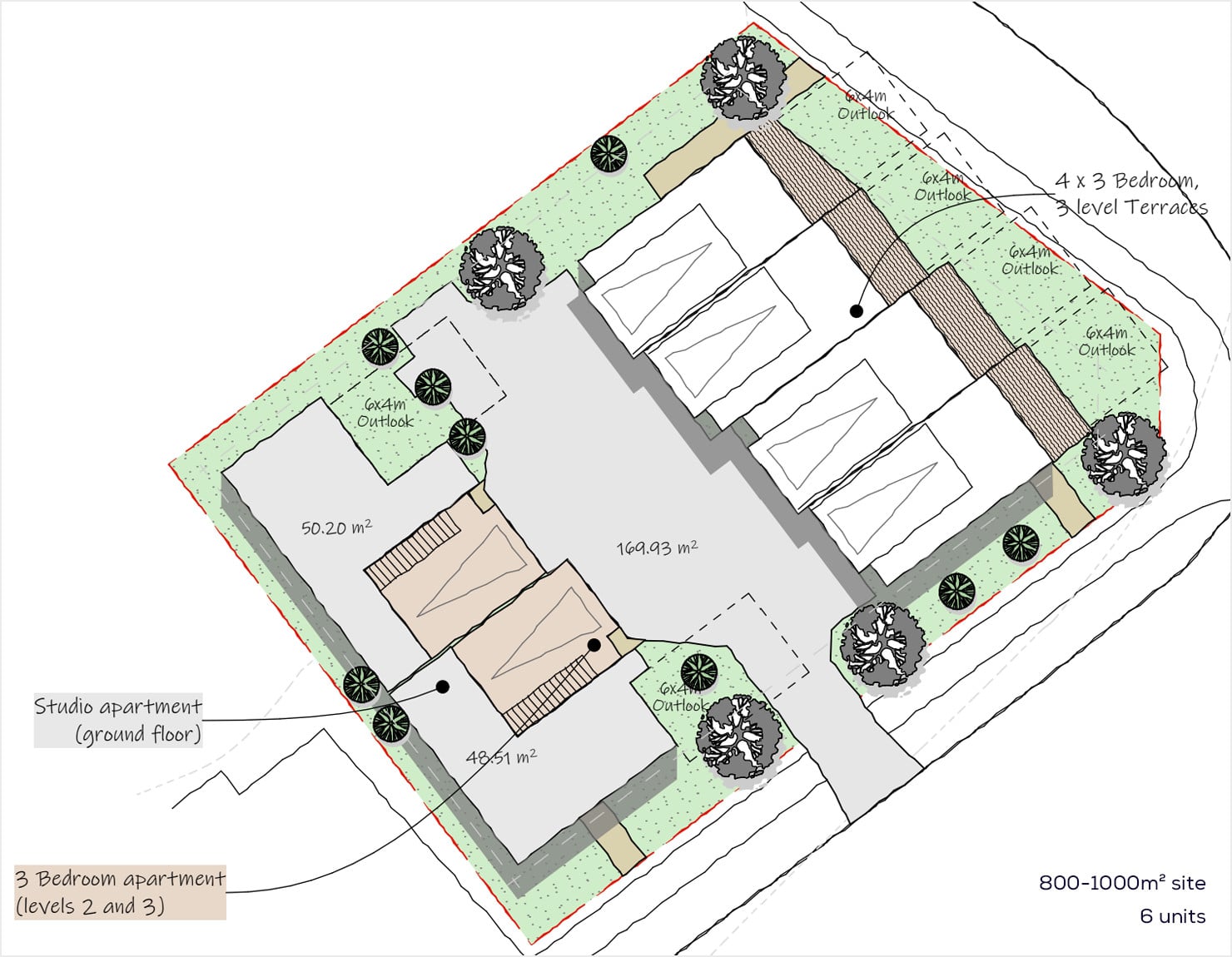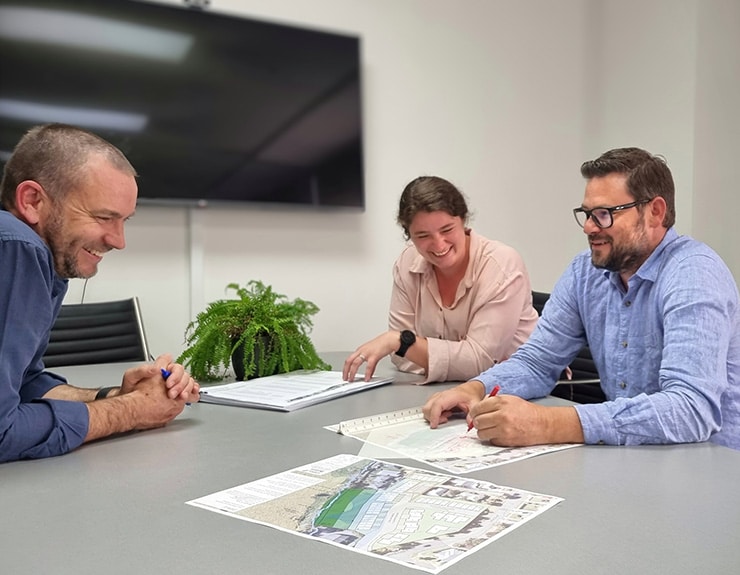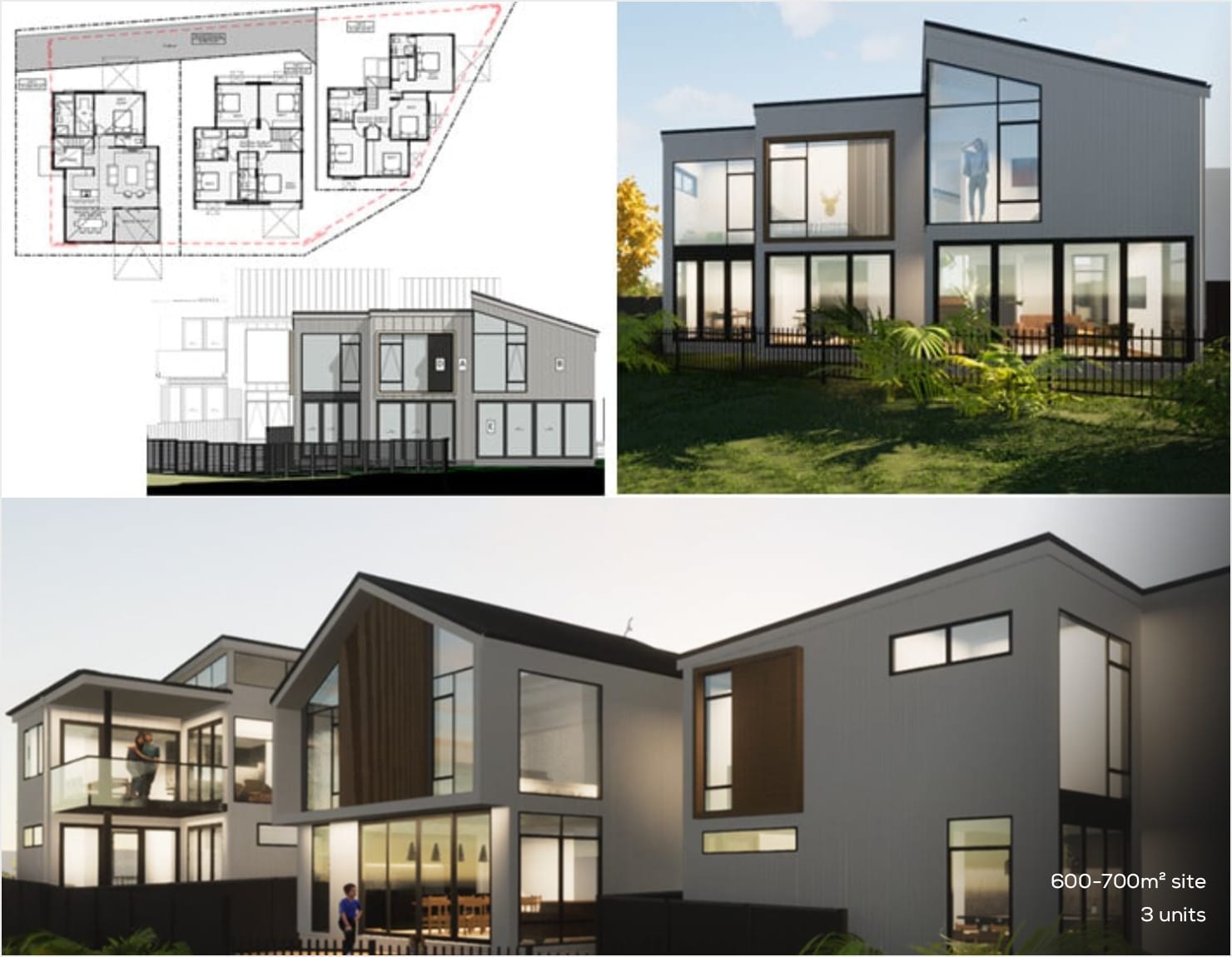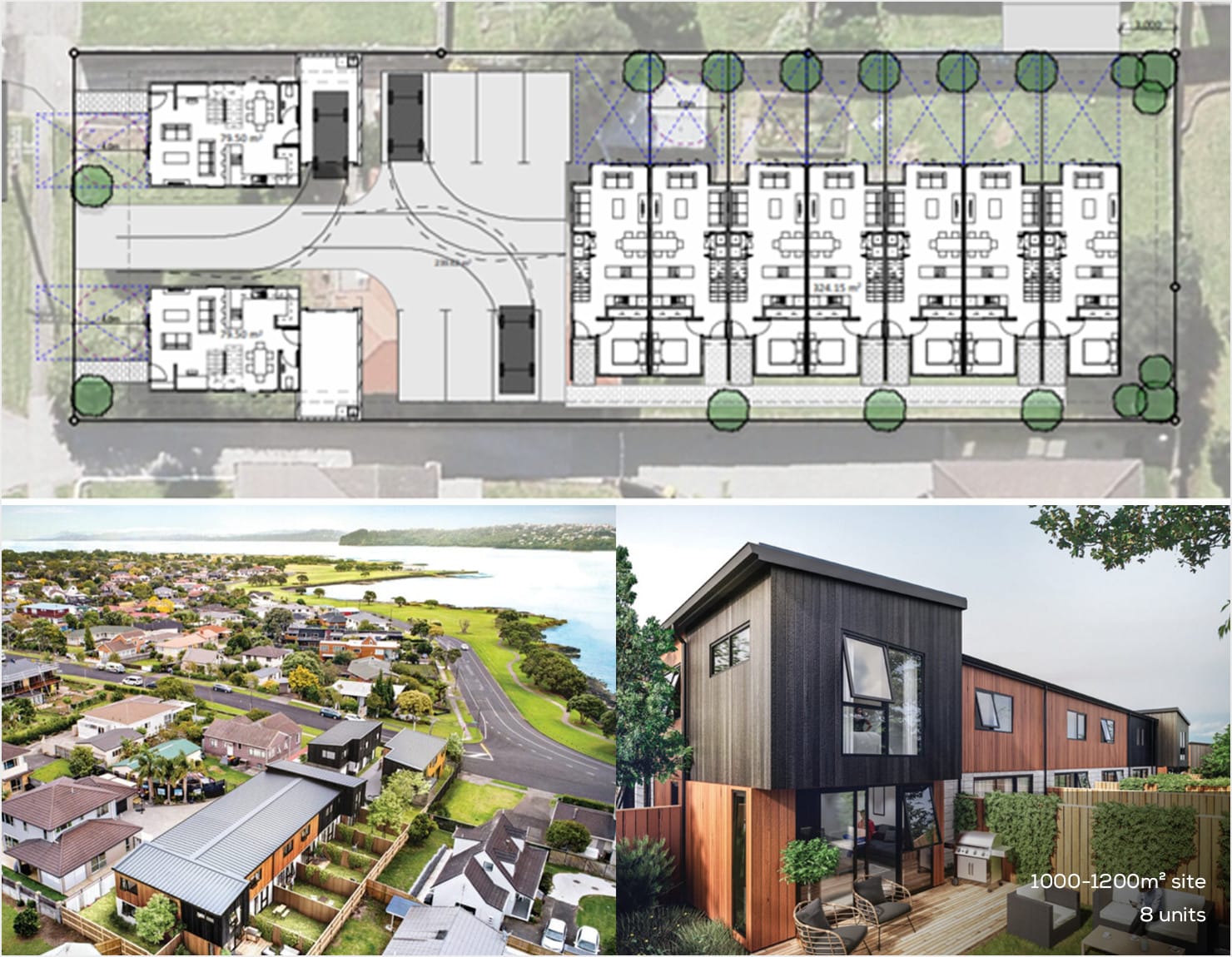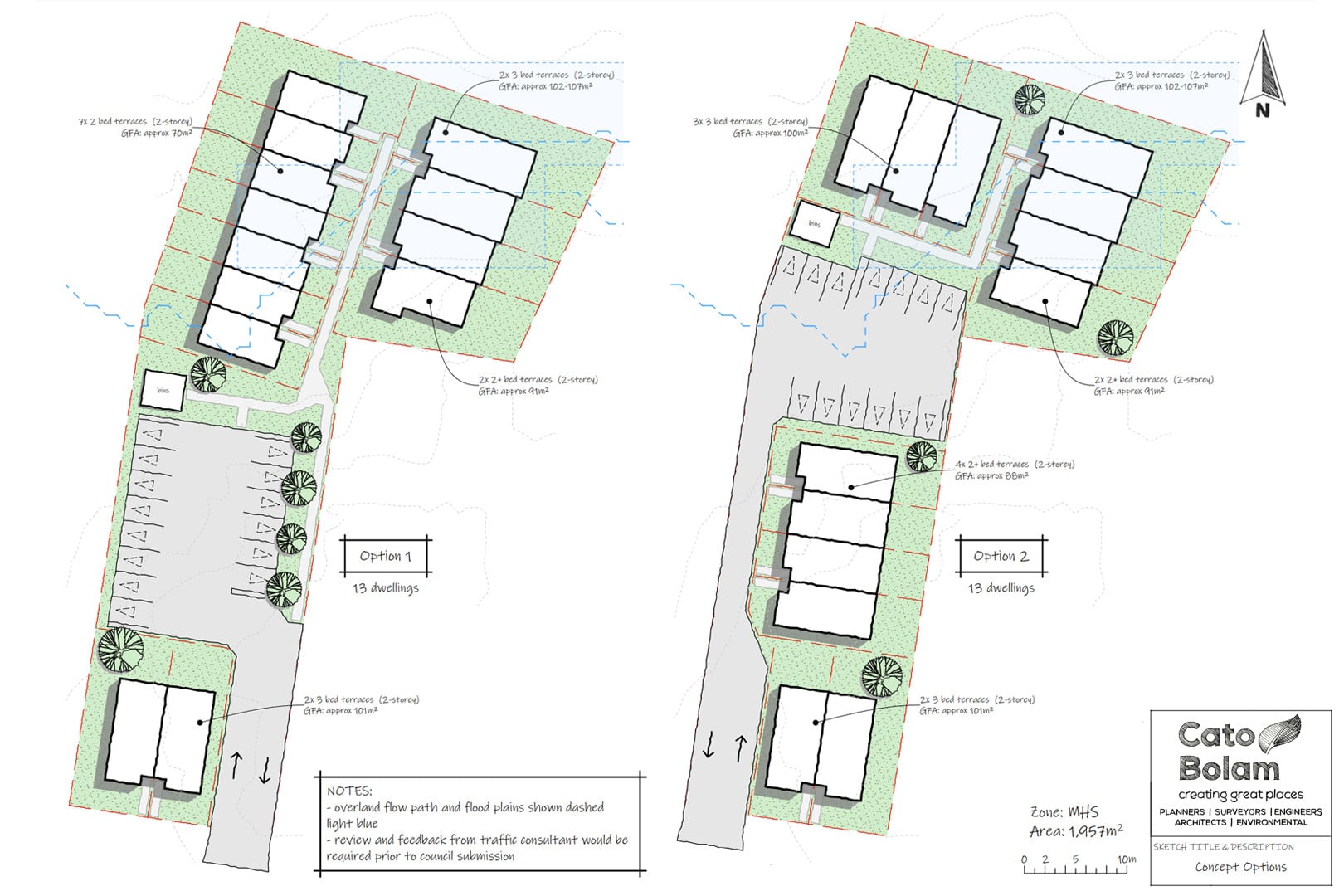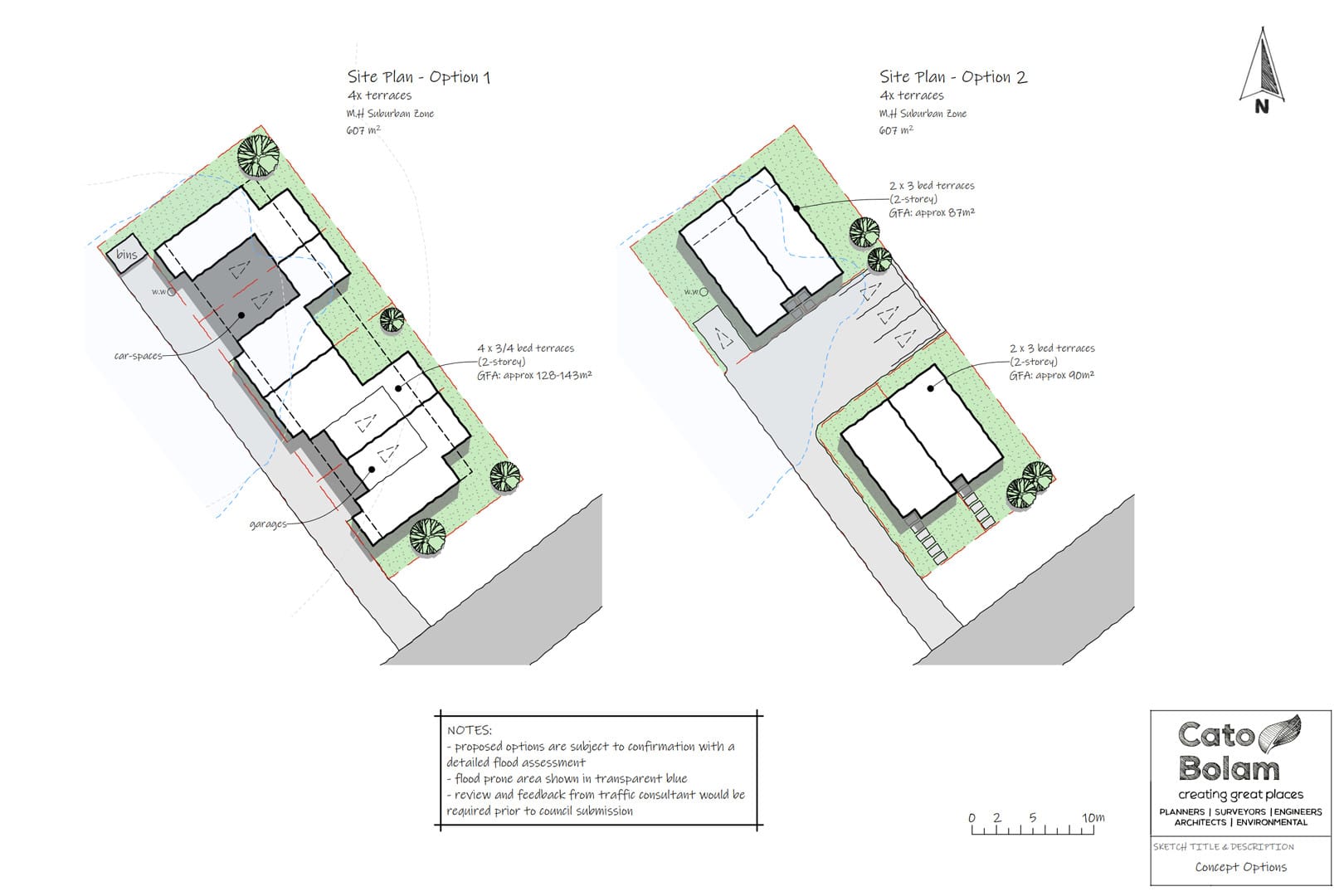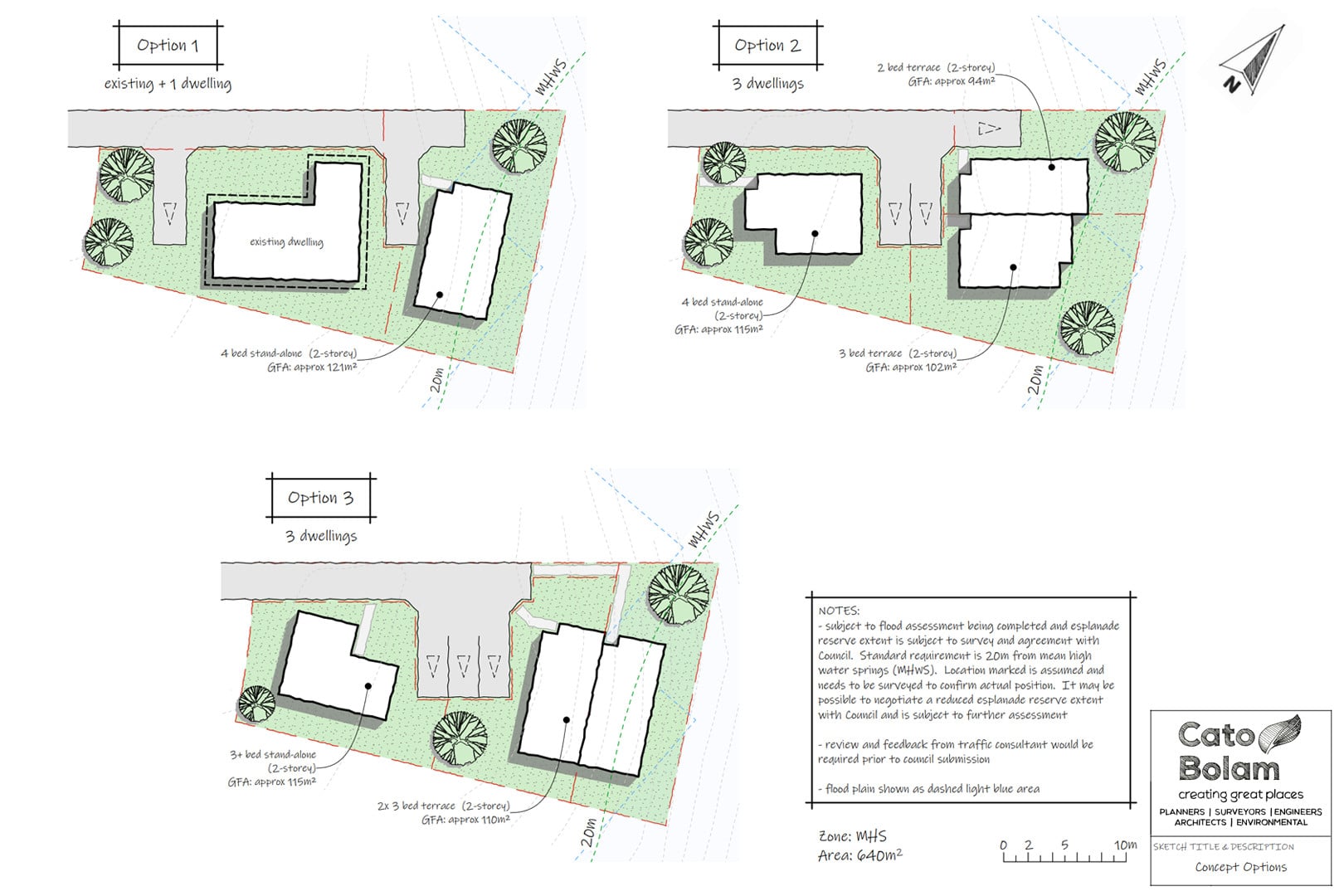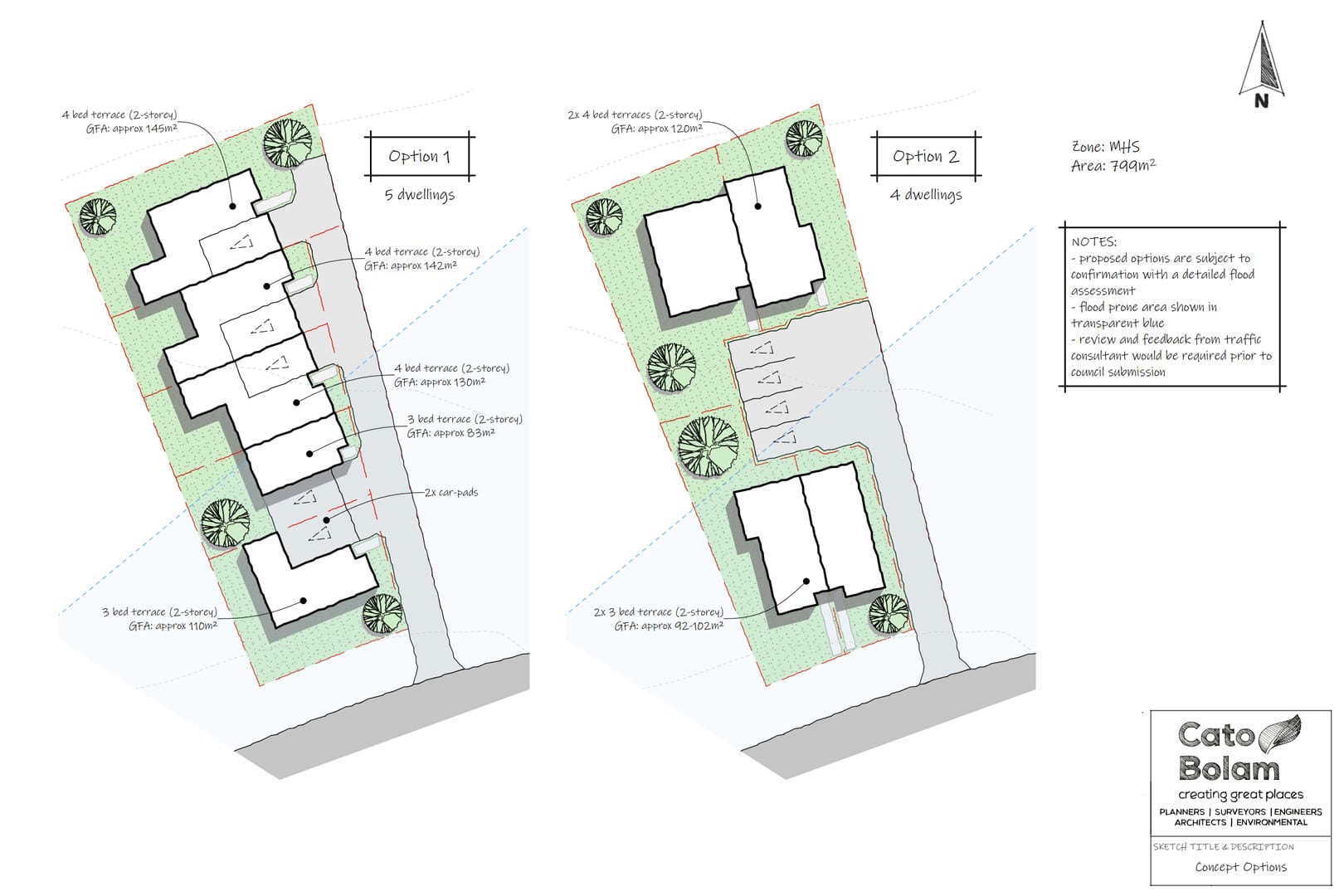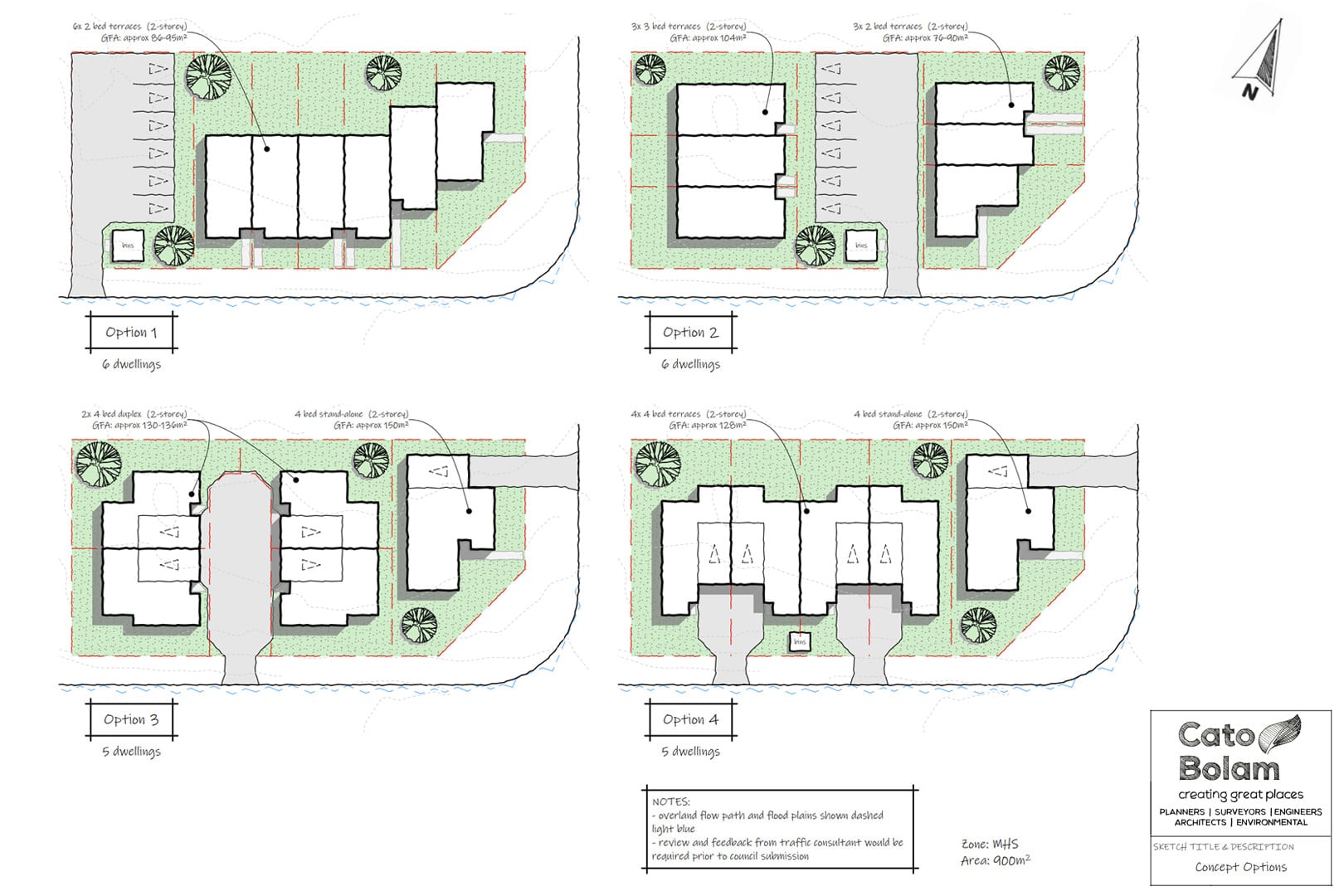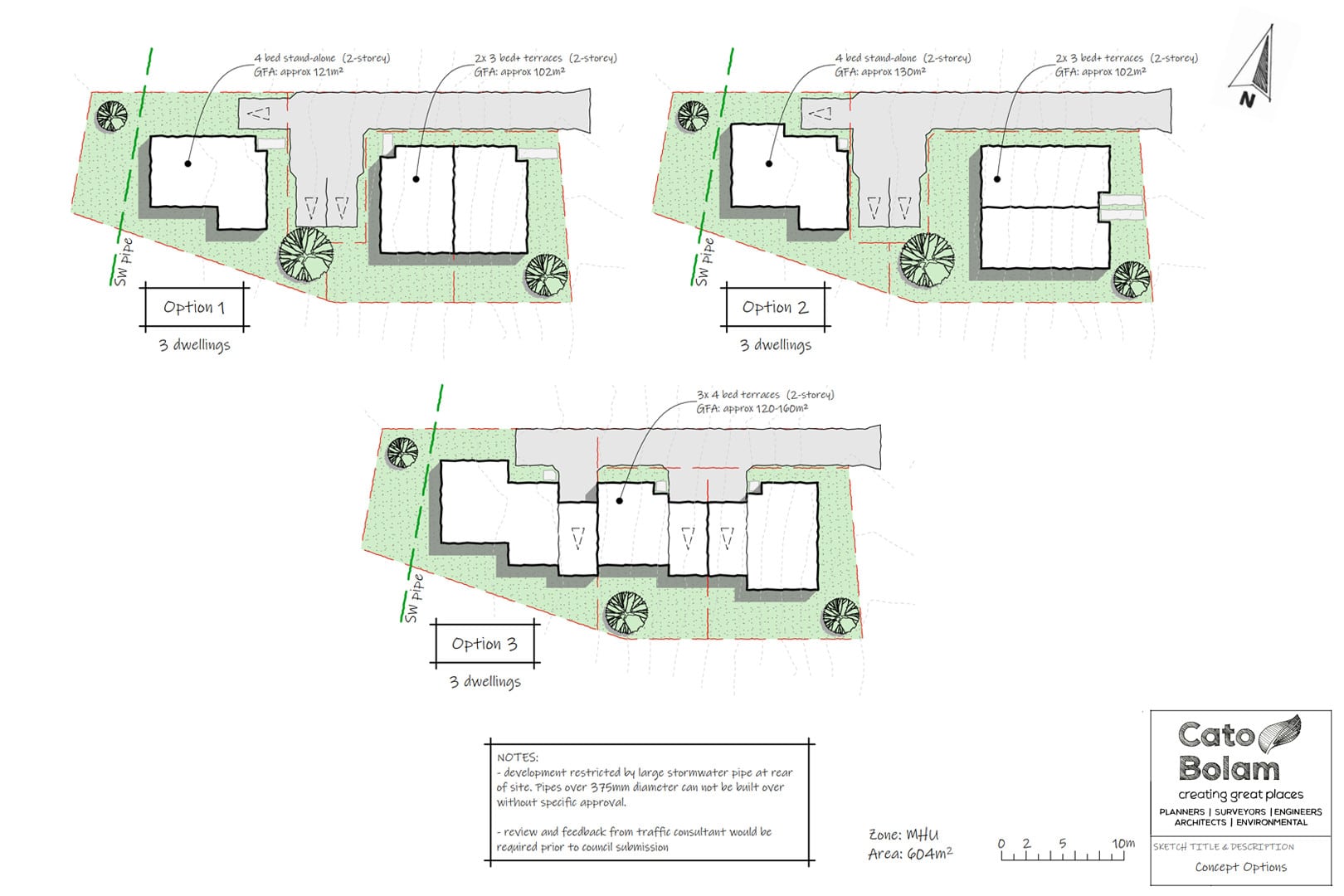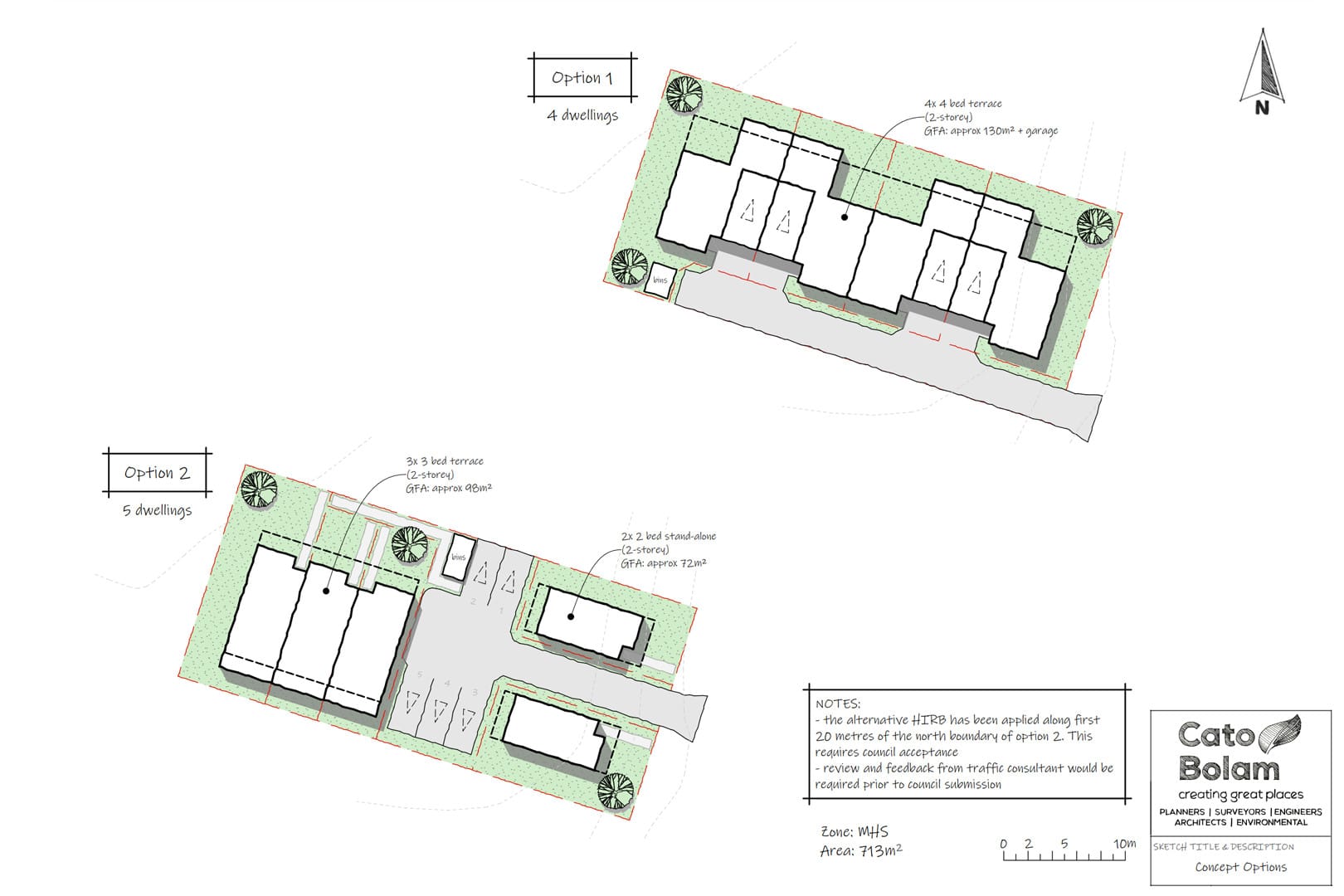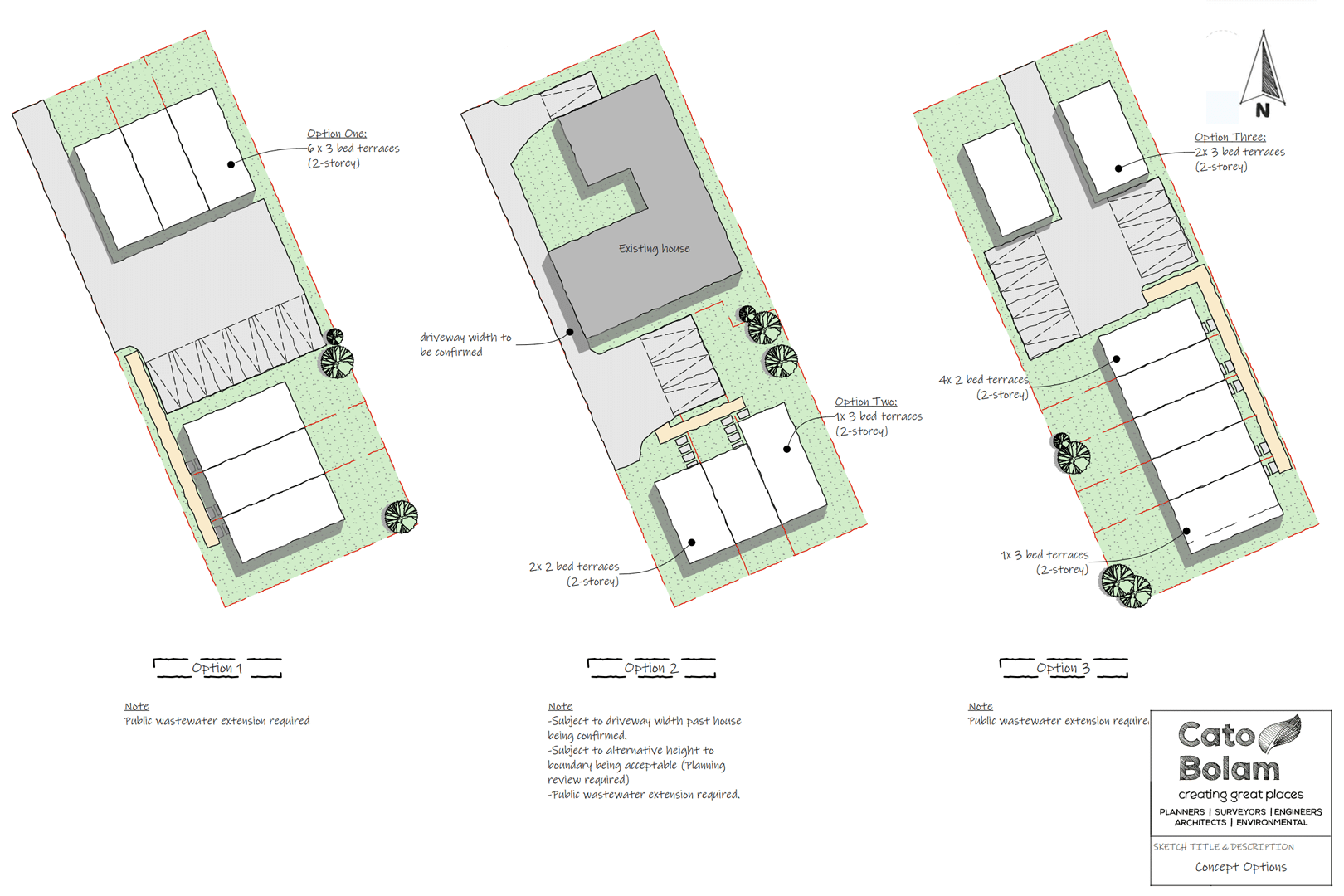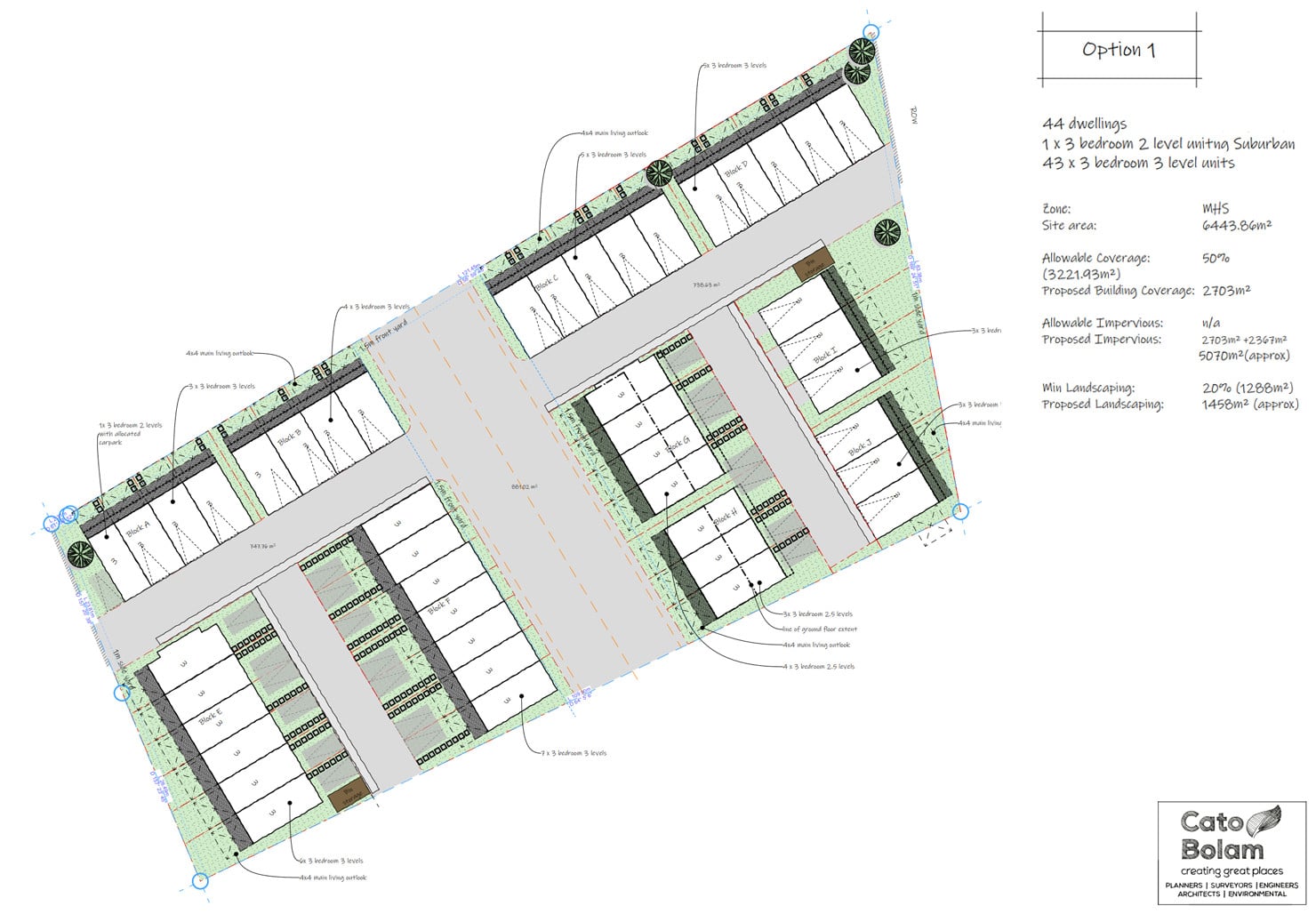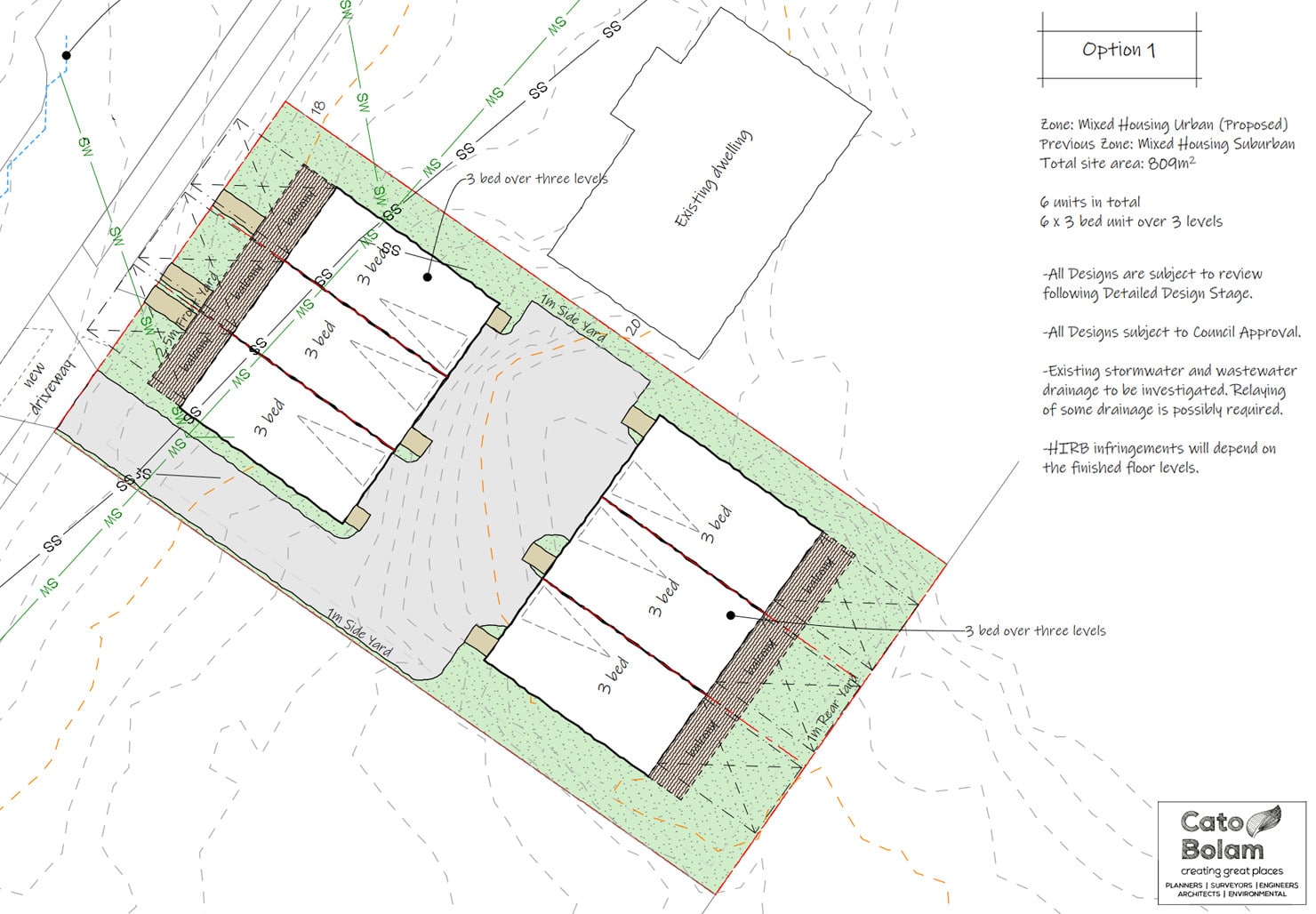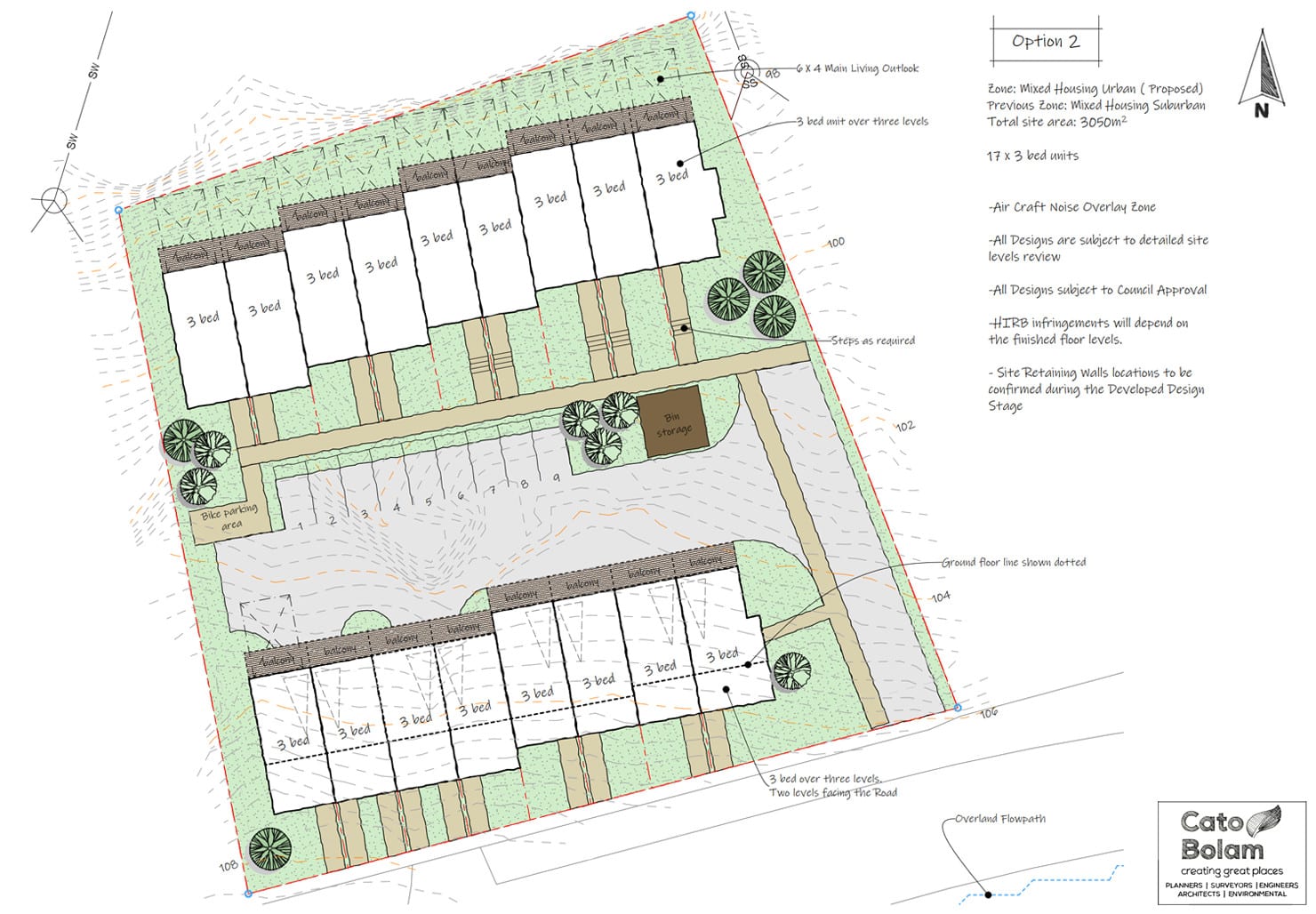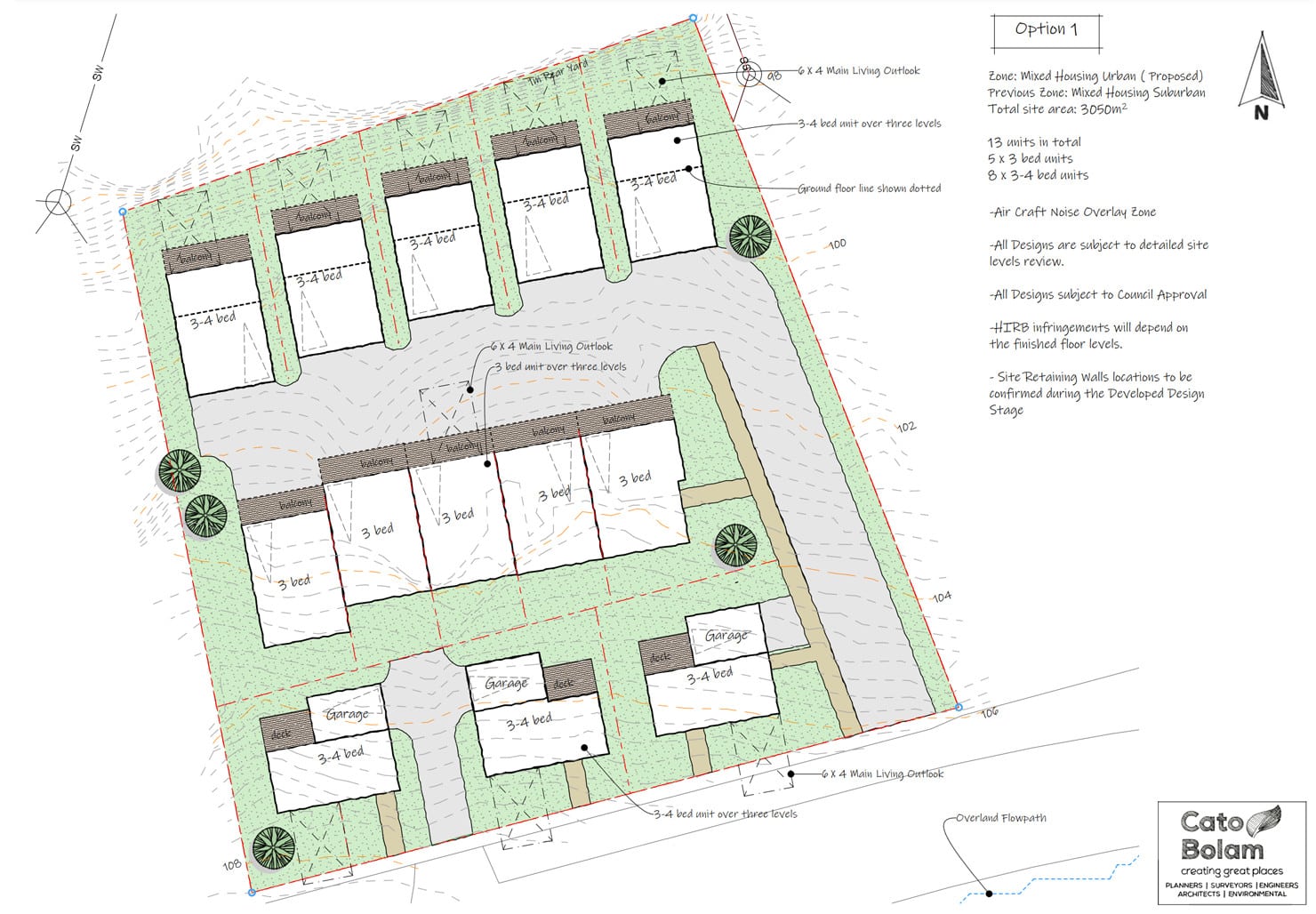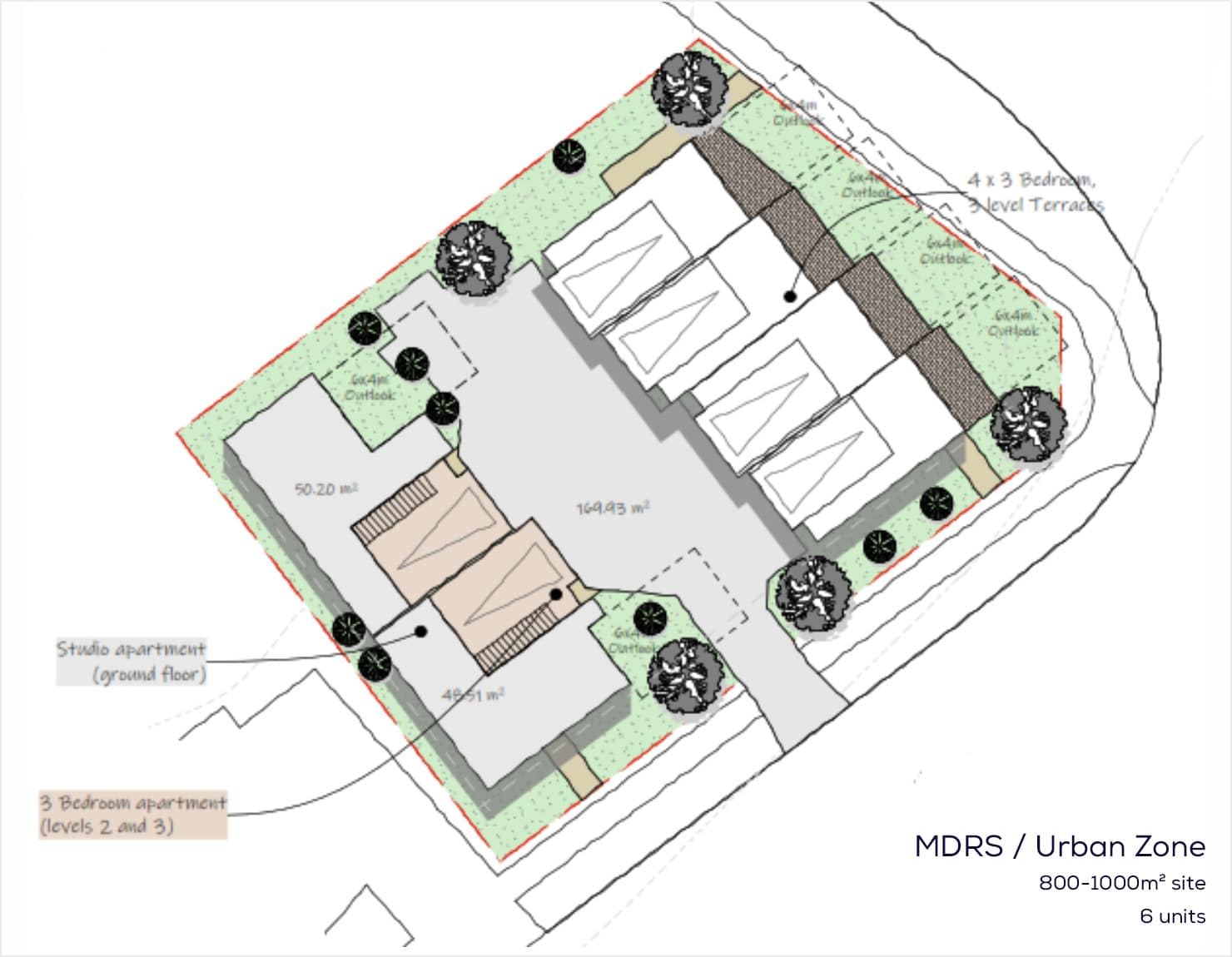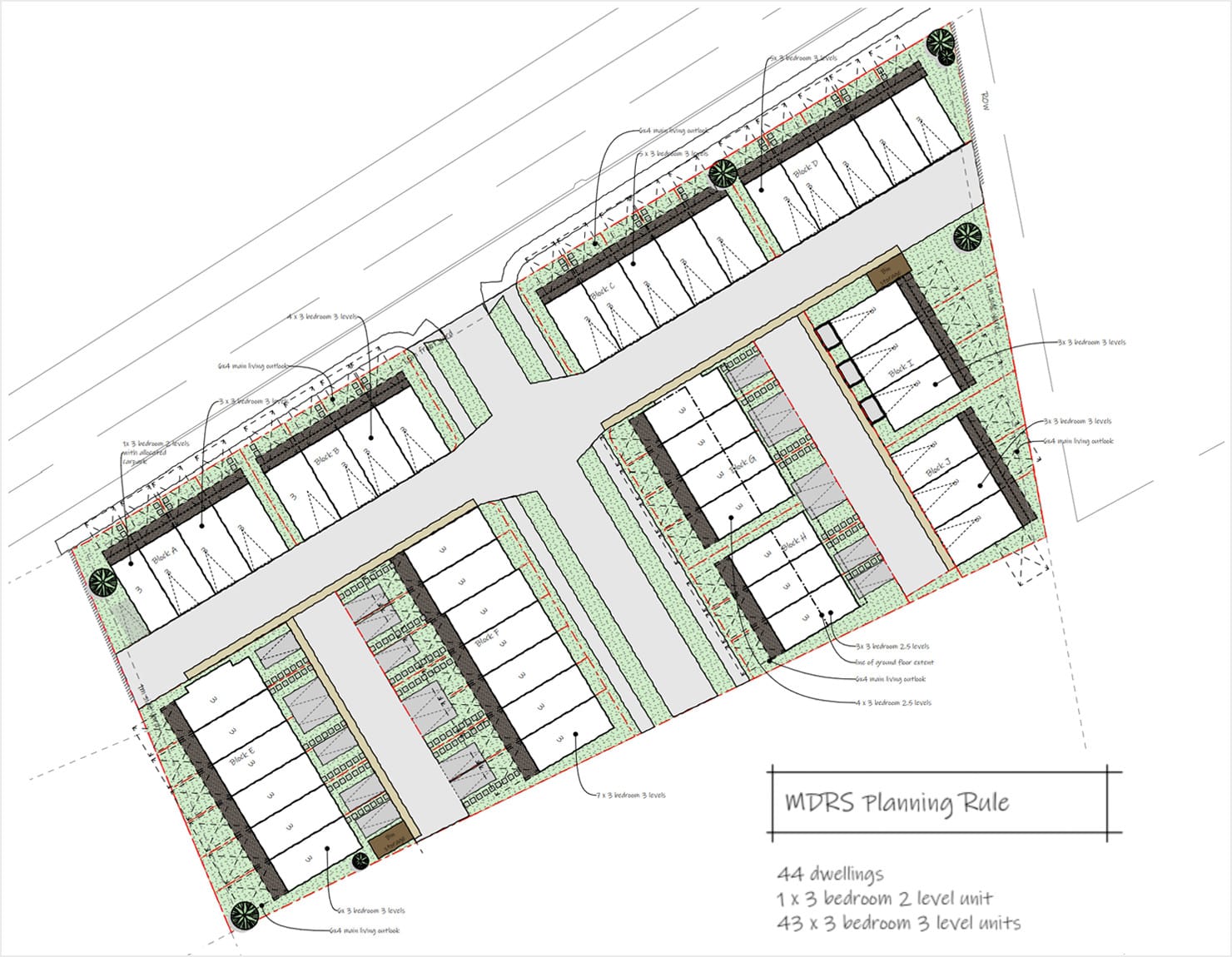Written by Chris Solleder | Director | Cato Bolam Consultants
At Cato Bolam we work with a large range of clients, from first time developers and investors through to large scale development experts. Whenever we are contacted about a new project one of the first questions, that is common across the spectrum, is “what can I do with the site?” For less experienced developers we are also explaining the property development process and offering guidance on where to start.
With 50 years of experience in land and property development, 100+ experienced and professional staff, and services across Planning, Surveying, Engineering, Architecture and Environmental we offer the expertise to maximise the potential of your land to work with you to create great places.
Our process generally begins with a development feasibility and concept option analysis. This is one of the most important phases of work as it tests the potential of the site, assesses available options and most importantly helps you determine if a development is likely to be feasible. All going well, the feasibility work sets the direction of the project through to completion. Or, if too many hurdles are identified this phase may determine that the project is not feasible and another site should be looked at.
Our team, will work closely with you to identify the options for your property and provide you with the best possible advice including providing a cost benefit analysis, concept options and potential development costs.
The first step is looking at the planning rules that will apply to the site.
In Auckland this has recently gone through a notified major change (“Plan Change 78”) with the introduction of the government-mandated medium density residential standards (“MDRS”). These standards allow up to three storey development, subject to set requirements that include standards relating to height in relation to boundary, site coverage, yards, open space, glazing and landscaping. These new standards are more permissive than the old ones and to varying degrees the MDRS introduce significant changes to what can be developed where, and when. More significantly, Plan Change 78 applies a Mixed Housing Urban (“MHU”) Zone over much of Auckland – even areas that have been zoned Single House or Mixed Housing Suburban Zone.
In the newly expanded MHU Zone some standards have “immediate effect”, i.e. up to 3 dwellings complying with the MDRS are possible, even without a resource consent. There is no set minimum land area requirement for each unit – the focus is on complying with the MDRS. Four or more units complying with the MDRS may also be possible but in that case a resource consent is required and the old zoning will need to be looked at.
Waikato District Council has recently gone through a major change (Proposed Waikato District Plan – Appeals Version) with the introduction of medium density residential zones. A variation to these rules (Variation 3) has been notified to enable development within Tuakau, Pokeno, Huntly and Ngaruawahia to comply with MDRS.
A much smaller percentage of “qualifying matter” areas either maintain a similar approach to the old zones or require some extra work, for instance to show that flooding or drainage issues don’t arise.
Another important factor is there are some areas that have location specific precincts or overlays and these areas have their own specific rules that take priority over the standard zoning rules – including the new MDRS. It is important to establish if a site is within a Precinct or Overlay area.
Overall, it does become a bit complicated, particularly in the current period up to early 2024 during which Plan Change 78 is being processed to come fully into effect.
A common misconception among some beginner developers is that you need to create vacant sites before developing. There are minimum area rules, but they apply only if you are creating a vacant section. If you are building and subdividing concurrently, no density limit applies, and this is why vacant site subdivision is now a rarity in urban Auckland compared to pre-Unitary Plan days.
Having no density limits opens up a lot of opportunity and potential for many different development options on a single site. It also makes the process of determining what sort of development you should do, that much more important as not every option will be feasible or profitable. With the MDRS and revised zoning under plan change 78 allowing 3 level housing across the majority of Aucklands residential zoned land, there are now more options available, which leads back to that common question of “what can I do with the site?” The other question that should be asked is “what should I do?” We can assist you in answering those questions.
When working with Cato Bolam, we identify and explain some of the key areas which often catch our clients out when considering redevelopment of their properties for subdivision.
- Poor urban design. Good urban design is very important when submitting to the Auckland Council and our Architecture team will work closely with our internal planners
- Correct access, parking etc.
- Drainage servicing and management of flooding.
When undertaking this concept design process we will consider how different housing types may work on the site. Some will work better than others and a housing type that works well on one site might not lead to the best outcome on another site. It is also important to have an understanding of the local market which may drive the type of housing that should be investigated, which is why we encourage our clients to discuss options with local real estate agents.
Within the first stage of initial development feasibility and concept designs, we utilise our in-house expertise to consider these constraints before putting pen to paper. We will review the zoning, surrounding environment which can provide risks and opportunities, assess risks around physical constraints and advise if further assessment is needed prior to completing concept work. In some cases, we can make assumptions on likely outcomes which are subject to later assessment, or we may recommend that assessment prior to concept development. An important example of risk requiring further assessment is overland flowpaths and flood plains. We assess each property on a case by case basis and provide our opinion on options to address constraints where available.
If the property is not already owned and is being purchased, time constraints are often a major factor in determining what work we will undertake in Due Diligence stage.
At the end of the concept design process, you will be presented with some development options considering the constraints of the site and your brief. From there further investigation can be undertaken to determine project costings. Cato Bolam can assist with providing full development costings in most cases. Once a development option is agreed upon, then the resource consent documentation process can begin.
Contact our team to begin exploring the opportunities for developing your property.
Scroll left or right for Feasibility Concept examples

